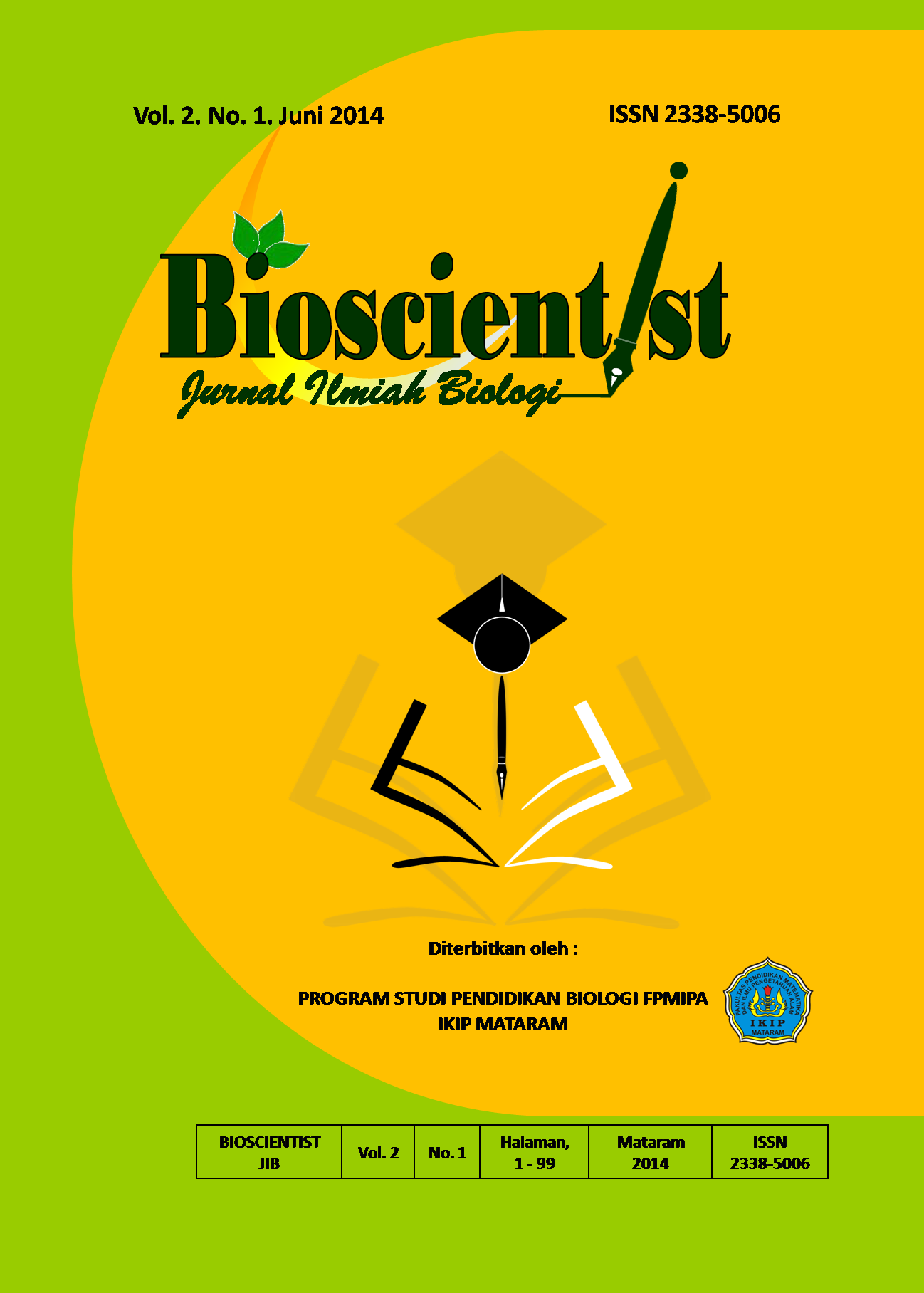PENGARUH KURKUMIN KUNYIT PUTIH (CURCUMA ZEDOARIA) TERHADAP KEBERADAAN KOLONI BAKTERI PADA LIMPA MENCIT YANG DIINFEKSI SALMONELLA TYPHIMURIUM
DOI:
https://doi.org/10.33394/bioscientist.v2i1.1310Keywords:
Curcumin, White Turmeric (Curcuma zedoaria), Bacterial Colonies, Spleen Mice, Salmonella typhimurium.Abstract
This study aims to determine the presence of Salmonella thypimurium in spleen Balb / c mice given curcumin white turmeric (Curcuma zedoaria). The pure compound curcumin is thought to be an imonomodulator that will boost the immune system even though it has been infected using pathogenic bacteria. Oral administration for seven days is expected curcumin compounds have been entered in every body tissue, so it can optimize body function even if given the infection that will inhibit and disrupt the organ. This study used 24 mice with control treatment (aquadest), curcumin, curcumin and infection, the last infection alone. Infection was administered on day 7 by injecting a dose of 105 CFU Salmonella thypimurium on the intraperitoneal (Ip) portion. On the 10th day all mice were killed and their lept spies were aseptic for bacterial colonies observation. Observation of bacterial colonies in spleen of mice was done by plate method, cultured on selective medium of Salmonella Sigella Agar (SSA), After incubation for 24 hours (1 day) no bacterial colonies were found on SSA media. In each treatment either control, curcumin, curcumin and infections or infections alone. This is because the number of Salmonella thypimurium bacteria infecting mice is too small. By infecting mice using Salmonella thypimurium only 10% of the germs that can survive and live in the body of mice. 1 hour after intravenous or intraperitoneal infection, more than 90% of the inoculated germs are captured and destroyed by phagocytes. The remaining amount is only 10%, so generally this disease does not cause death.References
Anonim. 2009. Gejala Tyfus. http://ezcobar.com/dokteronline/dokter15/ndex.php?ption=com_content&view=article&id=45 3:gejala-tifus&catid=0 penyakitmenular&Itemid=57. Diakses pada 13 November 2013.
Bright, J., J. 2008. Curcumin and Autoimmune Disease. http://www.ncbi.nlm.nih.gov/pu bmed/17569223, PubMed, Neuroscience Research Laboratory, Methodist Research Institute. Diakses pada 20 November 2013.
Christine. 2007. Thesis: Clonal Propagation of Curcuma zedoaria rosc and Zingiber zerumbet smith (zingiberaceae). Malaysia: Universiti Sains Malaysia.
Irmawati, I., Tjahjono, Dharmana, E. 2010. Pengaruh Jus Aloe Vera terhadap Proliferasi Limfosit, Produksi Reactive Oxygen Intermediate dan Koloni Kuman Organ Hepar Mencit Balb/c yang Diinfeksi Salmonella typhimurium. M Med Indones.
Primawati, S., N. 2012. Pengaruh Ekstrak Metanol Kunyit Putih (Curcuma zedoaria) dan Salmonella typhimurium terhadap Profil Hematologi dan Koloni Bakteri pada Limpa Mencit Balb/c (Mus Musculus). Tesis: Universitas Mataram.
Sunarno. 2007. Efek Phyllanthus Niruri L pada Prosentase Neutrofil, Koloni Bakteri Limpa, dan Histopatologi Hepar Mencit Balb/c yang Diinfeksi Salmonella typhimurium. Tesis: Universitas Diponegoro.
Varalakshmi, C., Ali, A., M., Pardhasaradhi, B., V., Srivastava, R., M., Singh, S., Khar, A. 2008. Immunomodulatory Effects of Curcumin: In-Vivo. Int Immunopharmacol. 5:688-700.













